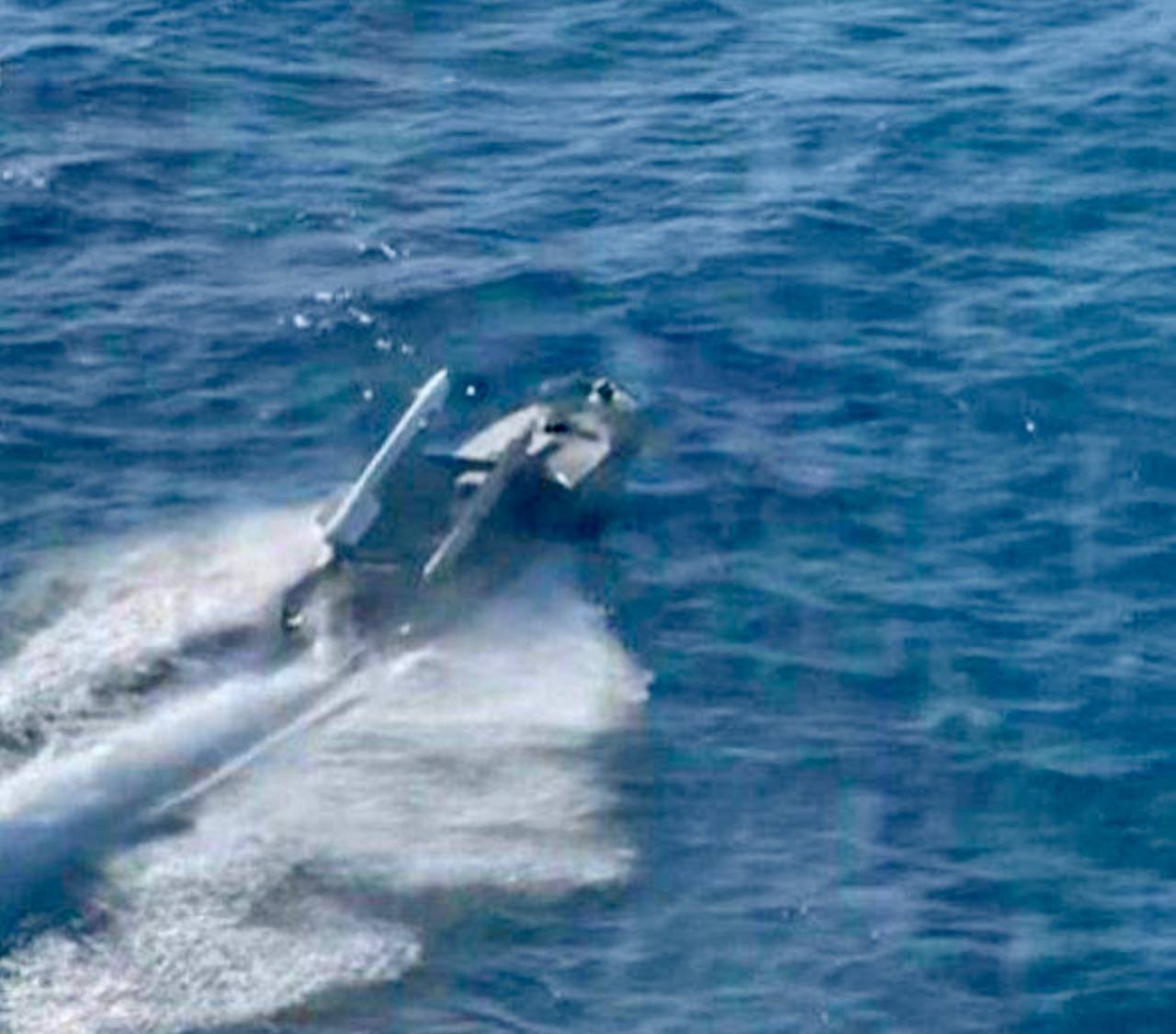The Ukrainian military accomplished a historic feat on December 31 by downing a Russian military helicopter using a missile fired from a sea drone.
Ukrainian military intelligence (HUR) announced on December 31 that it employed the Magura V5 naval strike drone to hit a Russian Mi-8 helicopter. The strike, which took place close to Cape Tarkhankut in Crimea, has been hailed as a landmark event in modern combat involving an unmanned surface vessel.
The HUR stated that during a battle in the Black Sea off the western coast of Crimea, the special unit Group 13 fired an R-73 “SeeDragon” missile from the Magura-V5 drone.
Though the sea drone was facing off against two Russian choppers, only one Mi-8 was shot down. The other helicopter managed to return to base after being engaged. The Defense Intelligence of Ukraine (DIU) has published a video of the engagement.
The footage, which appears to have been taken by the drone using thermal vision, shows a luminous object approaching a helicopter in the skies before the aircraft blows up and falls into the ocean. Accompanied by a dramatic background score, the footage ends with the text: “Happy New Year 2025.”
The video has been extensively shared on social media, with commentators calling it an “extraordinary strike” and lauding the Ukrainian forces for “making history.”
In addition to the video, Ukrainian intelligence also secured a radio intercept in which a pilot of a Russian Mi-8 helicopter, hit by a missile fired from a Magura V5 USV, described the type of attack and its effects on the aircraft, the DIU reported in the aftermath of the attack.
“There was a bang – I got hit. It was a launch from the water. After that, there was another flash. I didn’t see where it went, but the first one hit me directly and exploded somewhere nearby – I could feel it on the helicopter, some systems went down,” the pilot is reported to be saying in the radio interception.
However, Russia has yet to acknowledge the attack at the time of writing this report.
Ukraine’s Magura-V5 Drone Boat
Ukrainian unmanned surface vehicles (USVs), commonly known as “drone boats” or “drone vessels,” have been giving a hard time to the Russian forces. These USVs can perform a variety of missions, such as reconnaissance, surveillance, and—most importantly—offensive operations against Russian Navy warships, thanks to their sophisticated capabilities.
The MAGURA V5 achieves a quasi-stealth configuration and exceptional mobility because of its hydrodynamic structure and streamlined profile.
Measuring 5.5 meters (18 feet) in length and 1.5 meters (4.9 feet) in width, the USV exhibits a cruising speed of 22 knots (40.7 kilometers per hour), a maximum speed of 42 knots (77.8 kilometers per hour) and an operational range extending up to approximately 833 kilometers (518 miles).
The V5’s automated control system reduces the need for human intervention during missions. This cutting-edge drone has many uses, including combat operations, mine countermeasures, patrols, search and rescue, surveillance, reconnaissance, and naval defense.
It was only this summer that this unscrewed surface vessel was equipped with repurposed R-73 air-to-air missiles in May 2024, in an arrangement often known as “FrankenSAM.” The USV carries two of these air-to-air missiles, which have a range of about 30 to 40 kilometers and are used by both Ukraine as well as Russia.

“They appear to be on their aircraft pylon rails but mounted upside down at a fixed elevation. This arrangement is simple and straightforward,” as renowned open-source intelligence (OSINT) and naval analyst H.I. Sutton noted. He also noted that the actual range would be much shorter as onboard sensors would limit it.
Magura-V5 drone boats have been instrumental in pushing back the Russian Black Sea fleet by attacking multiple vessels in the Black Sea, thereby reducing the Black Sea Fleet’s combat capability. For instance, Ukraine successfully employed six MAGURA V5 multi-purpose unmanned surface vessels (USV) to sink the Russian Tarantul-III class missile corvette Ivanovets.
Given Ukraine’s limited naval capabilities, the country has strategically employed missiles and a fleet of diverse maritime suicide drones to counterbalance Russia’s predominant influence in the Black Sea.
Before being equipped with air defense missiles, these sea drones were mostly defenseless against aerial fire. For instance, the Magura-V5 carrying air-to-air missiles was engaged by a Russian Ka-27 Helix helicopter days after the sea drone destroyed the Russian high-speed patrol boat of project 12150 “Mongoose.”
However, the addition of anti-aircraft missiles has made these sea drones much harder to destroy, as evident in the latest incident.
- Contact the author at sakshi.tiwari9555 (at) gmail.com
- Follow EurAsian Times on Google News




